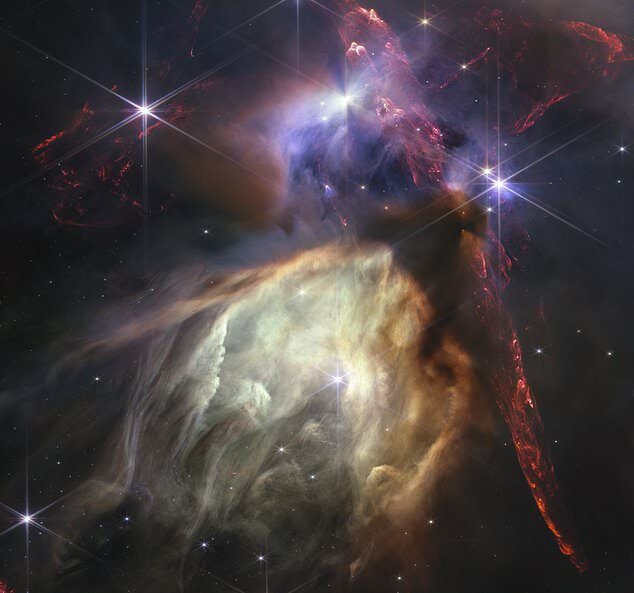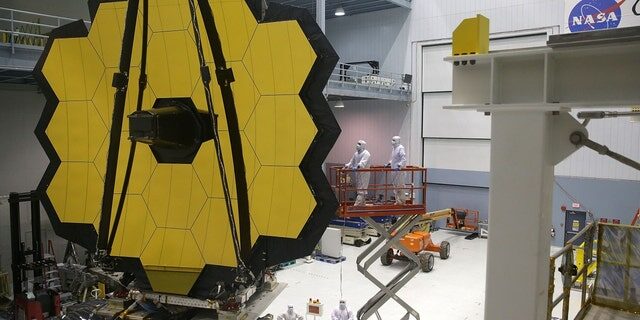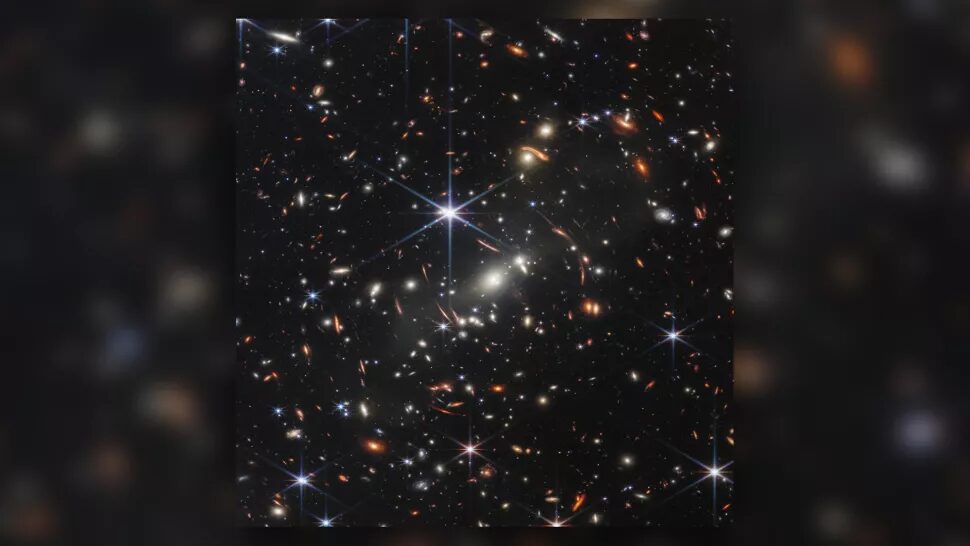
© NASA, ESA, CSA, STScI, Klaus Pontoppidan (STScI)The Rho Ophiuchi cloud complex: Jets bursting from young stars crisscross the image, impacting the surrounding interstellar gas and lighting up molecular hydrogen, shown in red. Some stars display the telltale shadow of a circumstellar disk, the makings of future planetary systems
NASA is celebrating the first year of the international James Webb Space Telescope's scientific operations with the release of a beautiful new image.
The agency released the $10 billion-dollar observatory's snapshot of a small star-forming region in the Rho Ophiuchi cloud complex. It is the nearest star-forming region to Earth, and its proximity at 390 light-years allows for a detailed shot.
There are no foreground stars in the intervening space. The region contains approximately 50 young stars, all of which are similar in mass to our sun - or smaller.
The darkest areas of the picture show thick dust cocoons still-forming protostars and red bipolar jets of molecular hydrogen appear horizontally across the upper third and vertically on the right. The jets occur when a star first bursts through its natal envelope of cosmic dust, shooting out a pair of opposing jets into space.
In the lower half, the star S1 carved out a glowing cave of dust. It is the only star in the image that is significantly more massive than the sun.
Some stars in the image display shadows that indicate protoplanetary disks, which are potential future planetary systems in the making.

© Alex Wong/Getty ImagesEngineers and technicians assemble the James Webb Space Telescope Nov. 2, 2016, at NASA's Goddard Space Flight Center in Greenbelt, Maryland
"Webb's image of Rho Ophiuchi allows us to witness a very brief period in the stellar lifecycle with new clarity. Our own sun experienced a phase like this, long ago, and now we have the technology to see the beginning of another's star's story," Klaus Pontoppidan, who served as Webb project scientist at the Space Telescope Science Institute in Baltimore, said in a statement.
The telescope's infrared capabilities have captured galaxies and planets in new light and dazzling color.
However, NASA says scientists are the most excited by Webb's information from its spectroscopic instruments. Its observations have already resulted in hundreds of scientific papers answering longstanding questions and raising new ones.

© NASA, ESA, CSA, and STScINASA’s James Webb Space Telescope has produced the deepest and sharpest infrared image of the distant universe to date. Known as Webb’s First Deep Field, this image of galaxy cluster SMACS 0723 is overflowing with detail. Thousands of galaxies – including the faintest objects ever observed in the infrared – have appeared in Webb’s view for the first time.
"In just one year, the James Webb Space Telescope has transformed humanity's view of the cosmos, peering into dust clouds and seeing light from faraway corners of the universe for the very first time. Every new image is a new discovery, empowering scientists around the globe to ask and answer questions they once could never dream of,"
NASA Administrator Bill Nelson remarked.
"Thousands of engineers, scientists, and leaders poured their life's passion into this mission, and their efforts will continue to improve our understanding of the origins of the universe - and our place in it," he said.
Julia Musto is a reporter for Fox News and Fox Business Digital.






Or
Ink blots.